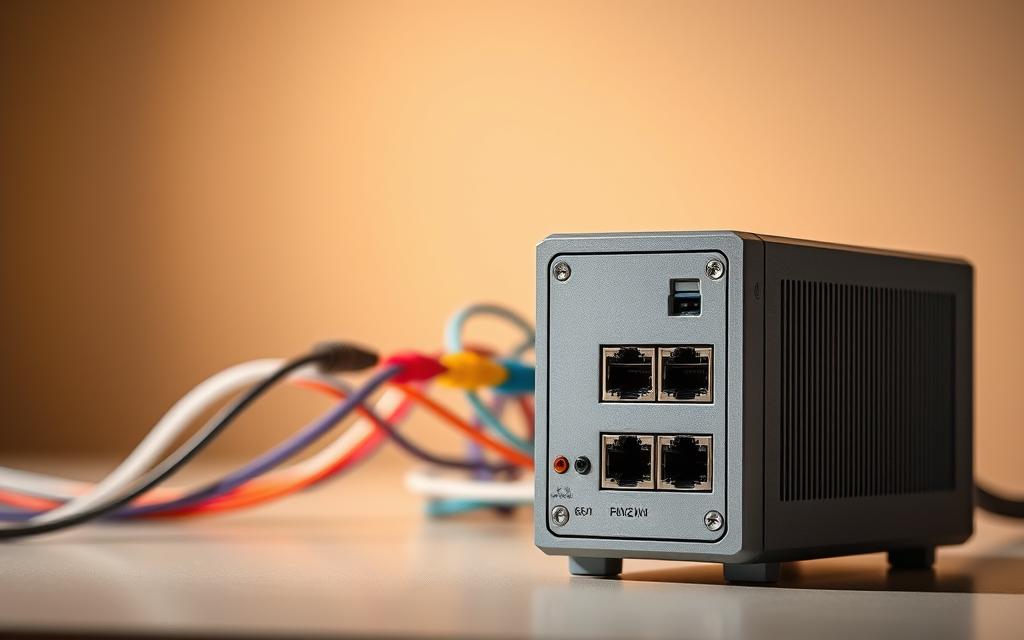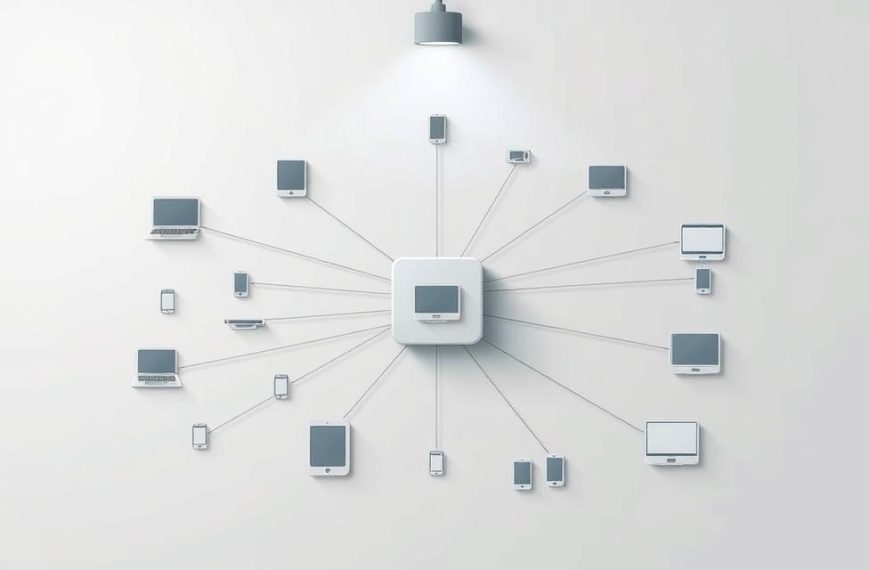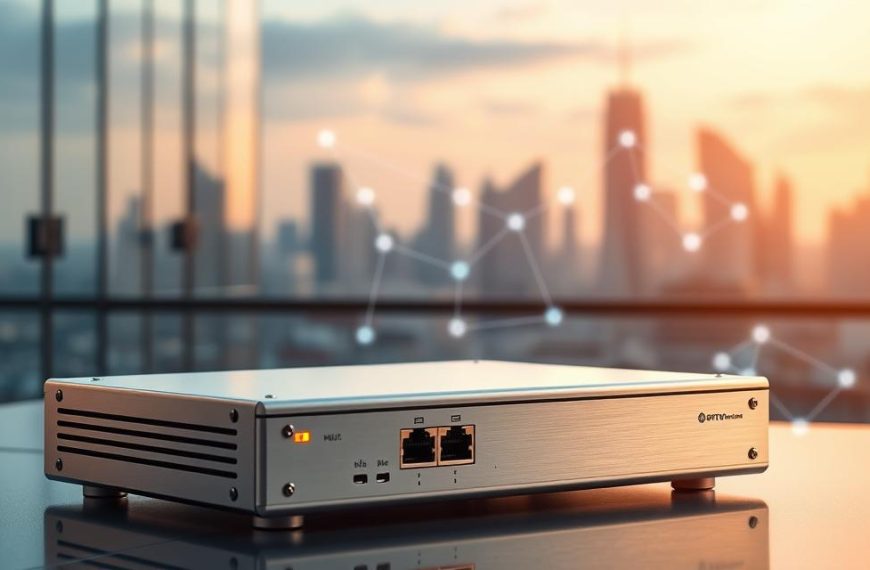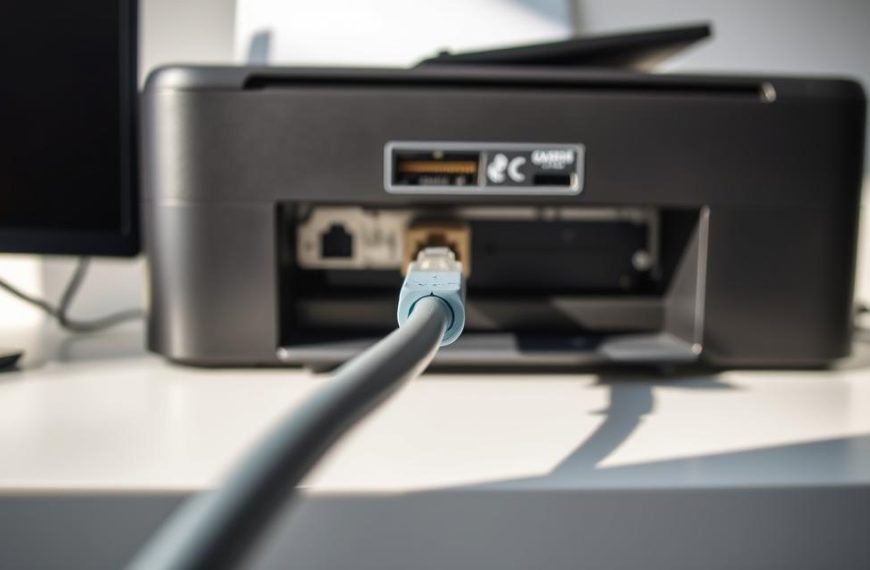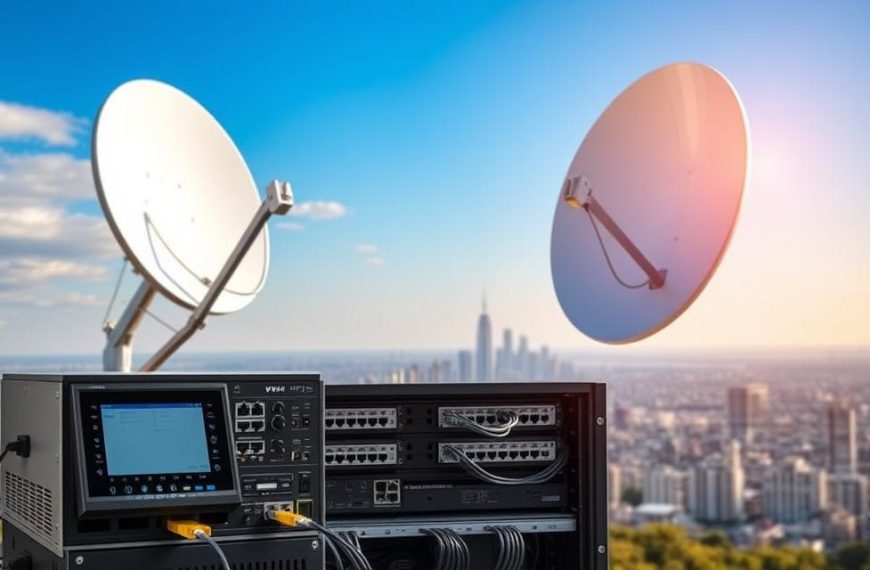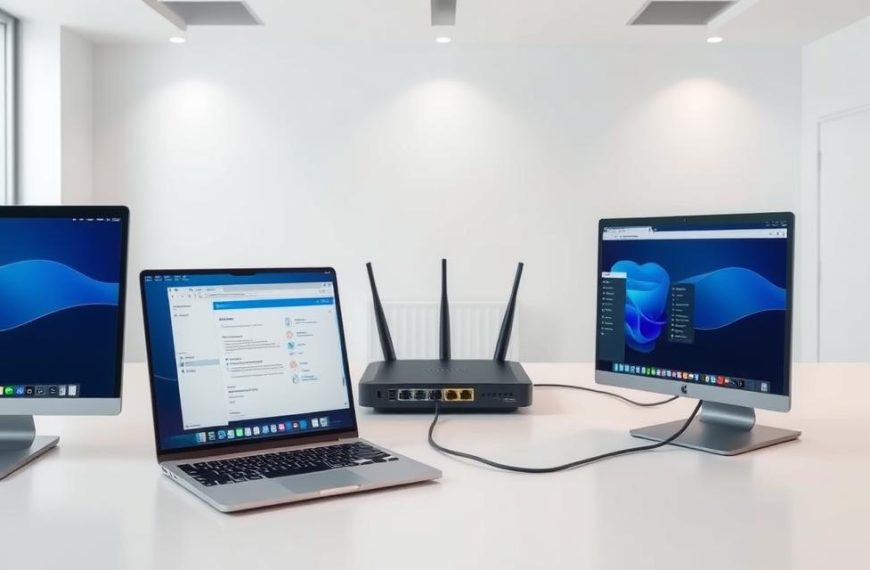Imagine the boundary where your devices meet the vast internet. This is the network edge definition in modern computing.
This key junction is the main computer network gateway. It links local networks to broader infrastructures. It’s where communication starts and data moves between systems.
The edge is your first user access point to digital resources. Its role is critical for security and performance in all network operations.
Grasping this concept is key for organisations to improve their digital setup. It’s the base for smooth data exchange and reliable connections.
Defining the Network Edge in Computer Networks
In computer networking, the network edge is key. It’s where local devices meet the wider network core. This area is vital for connecting end-users to network services, making up a big part of our digital world.
Core Concept and Historical Context
The network edge idea grew with distributed computing. Early networks had centralised mainframes and terminals. As tech improved, the edge and core became clearer.
This change led to today’s functional separation. Old networks saw everything as one system. Now, we see edge and core as different roles.
The growth of the internet shows how the edge has evolved. From small networks to global ones, the edge is always where users start. This helps us understand today’s networks and what’s coming next.
How It Differs from Network Core
The network edge vs core is a key idea. The edge deals with user interactions, while the core handles backbone services. This makes the system better and easier to manage.
Functional Separation
Edge devices handle user requests and local data. The core manages big traffic and shared services. This split helps each part do its job best.
Edge focuses on user experience and quality. The core is about speed, reliability, and big-scale service delivery.
Geographical and Logical Boundaries
Geographical boundaries separate edge from core. Users are usually in offices, homes, or on the move. The core is in data centres and network facilities.
Even without clear physical separation, logical boundaries exist. Virtual segments keep the edge-core distinction true, no matter where they are. This ensures the system works well everywhere.
| Characteristic | Network Edge | Network Core |
|---|---|---|
| Primary Function | User access and interface | Data transport and service delivery |
| Device Examples | PCs, smartphones, routers, modems | Servers, switches, backbone routers |
| Performance Focus | Response time and user experience | Throughput and reliability |
| Management Scope | Individual user connections | Aggregate traffic flows |
| Physical Location | Distributed endpoints | Centralised facilities |
The table shows how functional separation affects different network parts. Knowing these differences helps designers make efficient, scalable networks. These networks meet both user needs and system demands.
The Network Edge as the User’s Gateway
The network edge is where users connect to digital resources. It turns raw network capabilities into services we use daily.
Facilitating User Access and Interaction
The network edge is the main link between users and network services. It’s key for managing digital interactions.
Entry Point for Data Transmission
All data going in or out of a network goes through the edge. This includes web requests and file transfers. The edge manages this flow well.
Gateways at the edge convert protocols. They make sure different systems can talk to each other smoothly.
Role in User Authentication
User authentication is a big security job at the network edge. Before access, edge systems check identity through various methods.
This keeps users and network resources safe from unauthorized access. Modern methods use many verification layers for better security.
Types of Devices at the Edge
Many hardware parts work at the network boundary. Each has its own role in connecting and processing.
End-User Devices: Computers and Smartphones
Personal devices are the most seen edge devices. They start connections and use network services.
These devices send out data requests. Their abilities grow with new tech.
Edge Servers and Routers
Infrastructure devices manage traffic and processing at the edge. Routers send data packets between networks.
Edge servers do tasks closer to users. This cuts down latency and speeds up responses.
Key Components and Technologies at the Network Edge
The network edge uses both hardware and software. Together, they make a good user gateway.
Hardware Elements
Physical parts are the base of network edge work. They include devices for specific tasks.
Modems and Access Points
Modems change digital signals for different media. Wireless access points create zones for mobile devices.
These devices connect user equipment to network infrastructure. Their performance affects user experience.
Edge Computing Devices
Special hardware does data processing at the edge. It does real-time analysis and decision-making.
This helps apps that need quick responses. Autonomous systems and IoT networks benefit a lot.
Software and Protocols
Software systems control how edge devices work and talk. Protocols set the rules for data exchange.
TCP/IP Utilisation
TCP/IP protocols are key for communication at the network edge. They ensure reliable data transfer between devices.
The protocol suite handles addressing, routing, and error correction. Its wide use makes global internet connectivity possible.
Security Protocols like TLS
Transport Layer Security and other security protocols protect data in transit. They encrypt information at the network edge.
Encryption stops unauthorized access to sensitive data. Modern security protocols keep getting better to fight new threats.
| Device Type | Primary Function | Common Examples | Security Considerations |
|---|---|---|---|
| End-User Devices | Initiate connections and consume services | Smartphones, laptops, tablets | Endpoint protection, authentication |
| Network Infrastructure | Direct traffic and manage connections | Routers, switches, firewalls | Access control, intrusion detection |
| Edge Computing | Process data near source | Edge servers, IoT gateways | Data encryption, secure processing |
| Connection Devices | Enable physical connectivity | Modems, access points | Signal protection, access management |
The network edge keeps evolving with new tech. New devices and protocols come out to meet changing needs and security demands.
Importance and Benefits of the Network Edge
The network edge is key in today’s digital world. It offers big advantages like better performance and security. It’s at the edge of networks, making things work faster and safer.
Enhanced Performance and Low Latency
Edge computing changes how we handle data. It does calculations close to where the data is, not in far-off cloud centres. This makes things work much quicker.
Things like IoT devices and computers get a big boost. They can process data faster and use less bandwidth.
This leads to faster responses and saves money. It makes it possible for apps that need to work in real-time.
Security Considerations
The network edge is a big target for hackers. It’s where the outside world meets our systems. So, it needs strong security to keep everything safe.
Threat Mitigation Strategies
Good security starts at the edge. It includes things like firewalls and systems that watch for threats. Regular checks are also important.
Organisations should use a mix of security methods. This includes:
- Watching for threats in real-time
- Quick responses to threats
- Keeping security up to date
- Training employees on security
Role in Data Privacy
The network edge is key for keeping data safe. It handles sensitive info locally, reducing the risk of leaks during transmission.
It uses strong access controls and encryption. This keeps data safe from start to finish. It also meets strict data protection laws.
Support for Emerging Technologies
The network edge is vital for new tech. It supports fast processing and quick responses. This helps bring new ideas to life.
IoT and 5G Integration
Edge computing is essential for IoT. It can handle the huge amounts of data from smart devices.
5G networks make things even better. Together, they enable things like self-driving cars and smart cities.
This mix at the network edge opens up new possibilities. It supports fast analytics and new business ideas.
| Technology | Edge Computing Benefit | Practical Application |
|---|---|---|
| IoT Devices | Reduced latency | Smart home automation |
| 5G Networks | Enhanced bandwidth | Mobile augmented reality |
| AI Processing | Local data analysis | Predictive maintenance |
| Cloud Integration | Hybrid architecture | Distributed applications |
The network edge is becoming more important as tech advances. Companies that use it well will thrive in our connected world.
Conclusion
The network edge is a key area that network admins must protect. It’s the main link between users and network resources. Knowing about the network edge helps companies set up better security and improve performance.
As networks get more flexible with virtualisation, the need for gateways grows. Today’s networks use edge computing to offer quick, reliable services and strong security. Teledynamics explains how these technologies work together in their blog on network edge versus edge computing architectures.
In the future, the network edge will be even more important for IoT, 5G, and new tech. It makes sure data moves fast and is managed well. Companies that focus on their network edge will stay ahead in our connected world.

